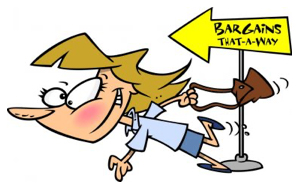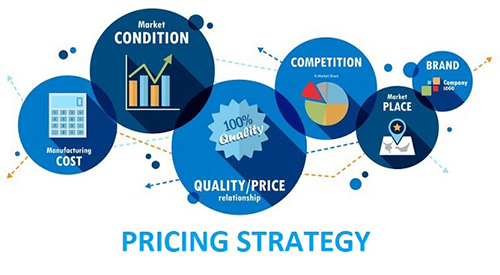It’s not uncommon to have customers walk through your door with product in hand and ask for it to be decorated. Maybe it’s a horse blanket, a Costco special or even retail branded merchandise the customer found in a liquidation store or direct retail. In some cases, they find product that is sold within the promotional industry.
 The thrill for the customer is often the experience of finding a “deal.” What they don’t realize is that they will spend time finding a deal only to pay more in the end for a finished piece.
The thrill for the customer is often the experience of finding a “deal.” What they don’t realize is that they will spend time finding a deal only to pay more in the end for a finished piece.
The value proposition your business offers to end users is often boiled down to an act of service — the customer is not willing to learn how to do it themselves or commit the financial resources necessary to accomplish the task. Decorators are modern-day artists who work on commission. Every commissioned piece has the input or flair of the decorator inherent within it.
There are many ways to produce that final piece, including embroidery, heat transfer, direct-to-garment and screen printing. A shop has to consider the fabric blend and weight, texture, size of product relative to decoration space, whether it is layered, and whether you need special accessories to manage the product on your equipment. Each shop and decorator regularly makes minute decisions to successfully produce art on the canvas.

One of the most challenging aspects of providing a service is determining its value — defining a dollar amount to apply to your effort and expertise. A decoration business has many costs that they have to recover for a “simple” application to stay profitable. Equipment, materials, facilities and training are expensive. These associated costs and the experience needed are significant reasons why end users are not decorating the product themselves. However, the market usually will try to dictate (within reason) the low and high thresholds consumers are willing to pay.
We often see a salesperson using a catalog with MSRP pricing and “throwing in” the decoration, up to 10k stitches or a two-color screen print, for example. The challenge with this approach is that you’re not discounting the canvas (the product) at all, while completely discounting the artist’s/decorator’s time and experience. If a shop allows for Bring Your Own Goods (BYOG) business, they will have at least two price lists: BYOG decoration pricing and pricing for when purchasing the product themselves.

For example: A polo shirt costs $10 wholesale and has an MSRP of $20. A decorator’s embroidery pricing for 10k stitches may be $7 for a BYOG project and $4 when the decorator purchases the product. The desired business margin in general is 30-40 percent. The customer buys the blank at retail for $16 (Minimum Advertised Pricing for some brands).
- BYOG: $16 (blank) + $7 embroidery decoration = $23 per polo to the customer *
Assumed margin would have been on $23 = 30.4% ** - Decorator Purchase: $18 (blank) + $4 embroidery decoration = $22 per polo to the customer *
Assumed margin would have been on $22 = 54.5% ** - Potential Alternative (decorator purchase): $15 (blank) + $7 embroidery decoration = $22 per polo to the customer *
Assumed margin would have been on $22 = 54.5% *** Fictional numbers for discussion purposes.
** Gross margin using fictional numbers for discussion purposes.
For volume customers, you can still provide embroidery decoration discounts accordingly. For example, a $15 blank plus $5 for embroidery decoration would come out to $20, for a 50% margin.
The framing of the discussion and the confidence in your value-added services should allow for an easier conversation. Every customer is looking for the best deal. By working with your team from the beginning, you can make sure they get it!
